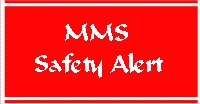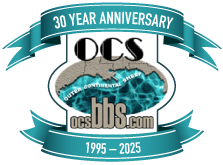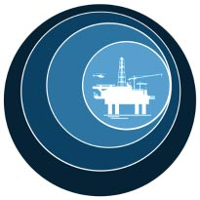Riser Skate/Casing Handling Carts
Effective Date: 6/1/2001
 | U.S. Department of the Interior |
| Safety Alert No. 195 June 1, 2001 | Contact: David Dykes |
Riser Skate/Casing Handling Carts
Two recent fatalities occurred in the Gulf of Mexico that involved riser skate/casing handling carts. Both incidents occurred on semi-submersible mobile offshore drilling units. In the first incident, two floorhands were connecting a stand of drill pipe with the iron roughneck when the riser casing cart began to move toward the drill floor from its parked position outside the drill floor area. The cart struck and fatally pinned one floorhand against the iron roughneck.
The investigation into the first incident revealed that the cart brakes were in a state of disrepair and contaminated with grease. The sea conditions at the time of the incident and the list of the drilling unit created enough force to cause the cart to begin to move. Furthermore, this cart did not have a secondary braking/locking device to prevent unwanted movement.
The second incident occurred while the mobile offshore drilling unit was under tow. The riser skate was moved forward from its stowed position onto the drill floor with the front end of the riser skate across the gantry crane’s track. The gantry crane was moving from starboard to port when the front leg of the crane struck the riser cart and knocked it off of its tracks. As a result, a roustabout, who was walking between the riser skate and V-door port wind wall, was fatally pinned by the cart against the wind wall.
The investigation into the second fatality revealed that the drilling contractor had not conducted a formal hazards analysis to identify all potential hazards associated with using the cart and gantry crane simultaneously.
It is therefore recommended that all drilling contractors who have riser skates/casing handling or similar type of equipment should conduct a review of their operation and maintenance of this equipment. The purpose of the review should be to identify any weaknesses and critical elements. Their review should consider, as a minimum, the following:
| The use of a hazards analysis of the operation to identify potential hazards. The analysis should result in the necessary job safety analyses and procedures for use of the equipment. | ||
| The development and implementation of detailed inspection and maintenance procedures for all critical operating components of the equipment. The inspection and maintenance procedures should also include the process for documenting inspection findings and corrective action taken. | ||
| The requirement of the use of a pin-type, positive locking device or other method to prevent unwanted movement when the cart assembly is not in use. |
—GOMR—MMS—






